Gen 0-S
The Gen 0-S parachute systems were simple models constructed with household items such as jars and left over springs. These models were used to determine the feasibility of a spring powered parachute system.
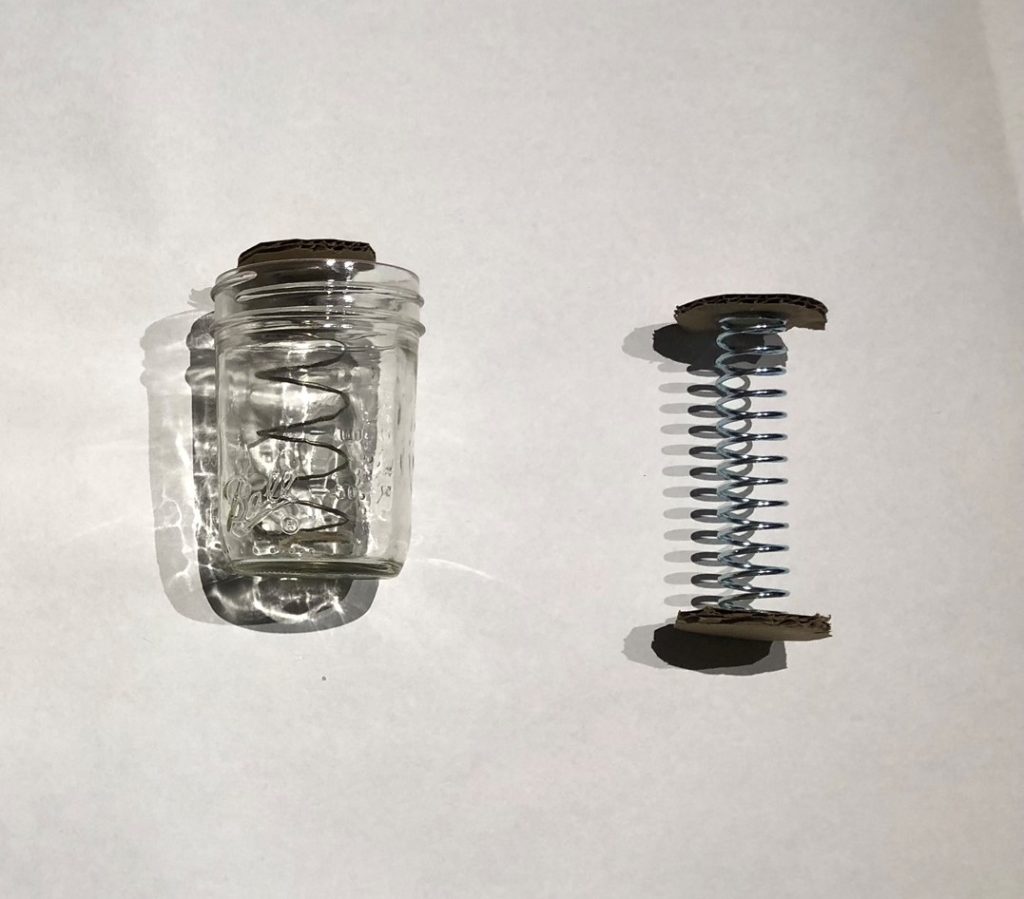
- Time in service: September 2018
- Tests performed: 1
- Problems: no release mechanism, small size
- Status: retired
Gen 1-S
Constructed with cardboard and sprinkler parts, the Gen 1-S parachute system was a simple proof of concept model used early in the development process. The Gen 1-S was in use for a few days and during that time performed only a couple of tests. These tests revealed the need for a better release mechanism. Most of the Gen 1-S was repurposed into the Gen 2-S.
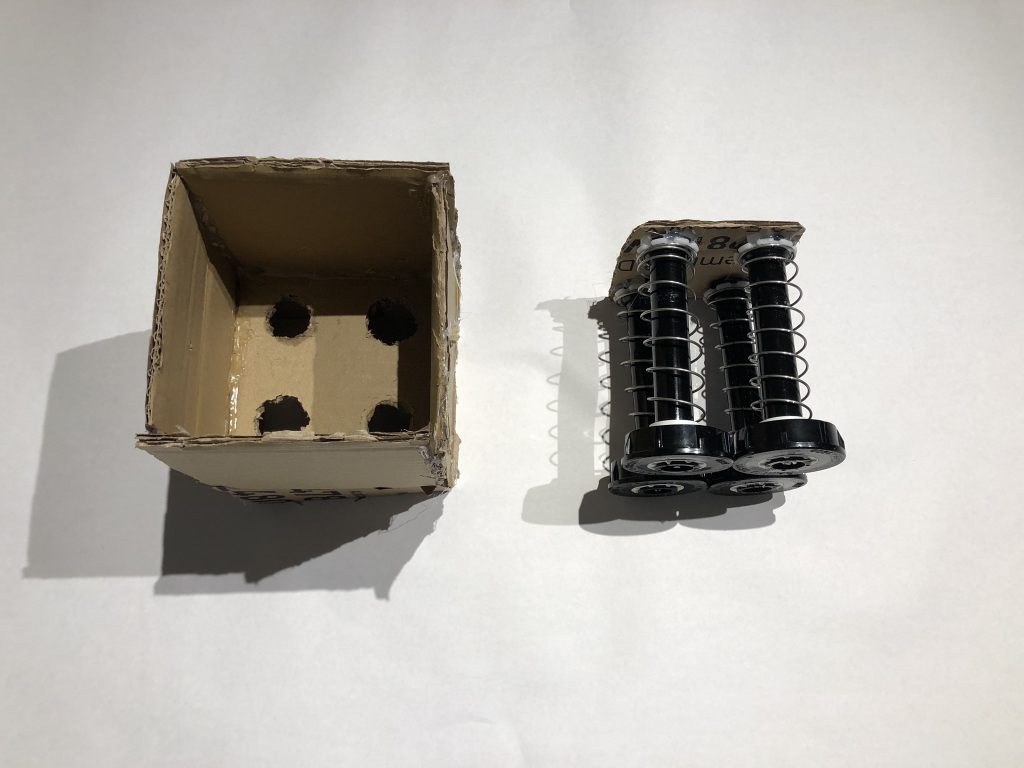
- Time in service: September 2018
- Tests performed: 1
- Problems: under powered springs, no release mechanism
- Status: parts used to build Gen 2-S
Gen 2-S
The Gen 2-S improved on the Gen 1-S by adding a simple, 3D printed, release mechanism. This mechanism, made the system easier to use and helped guide the design for future generations of this system. After a few tests it was replaced by the Gen 3-S.
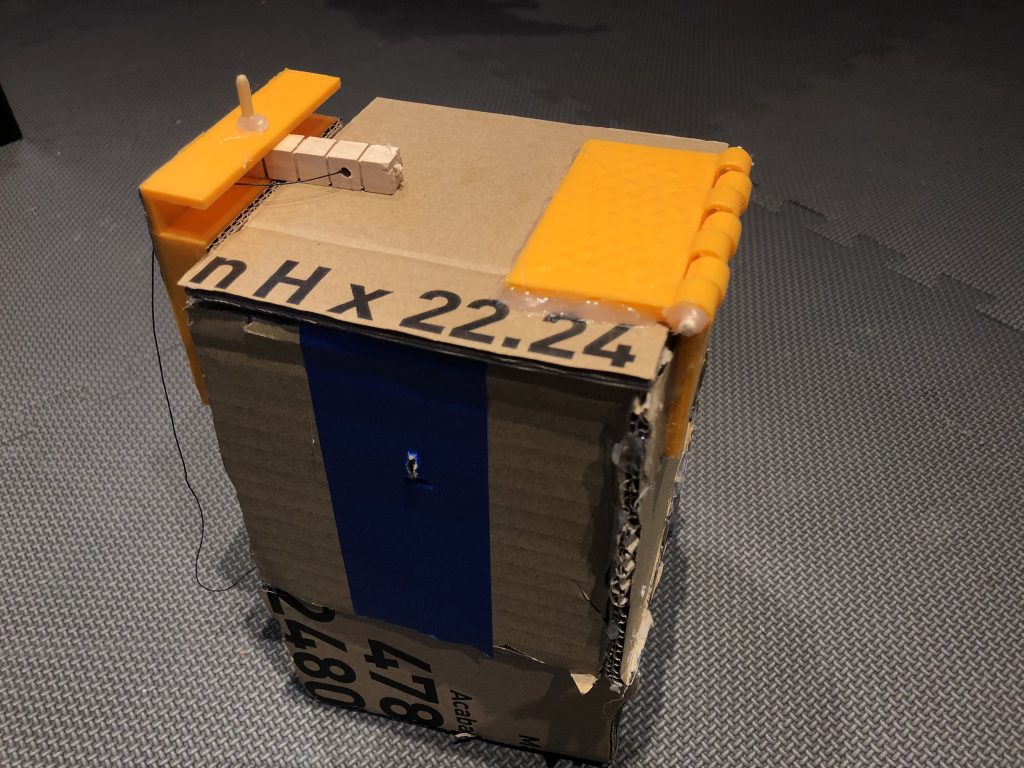
- Time in service: November 2018
- Tests performed: 1
- Problems: under powered springs
- Status: retired
Gen 3-S
The Gen 3-S marked many firsts for the parachute system. It was the first to be made of fully 3D printed parts and to utilize purpose bought springs. The Gen 3-S also used a servo powered release mechanism. If it were not for the numerous problems that were mostly fixed in the Gen 4-S, the Gen 3-S would have been the first parachute system to fly.
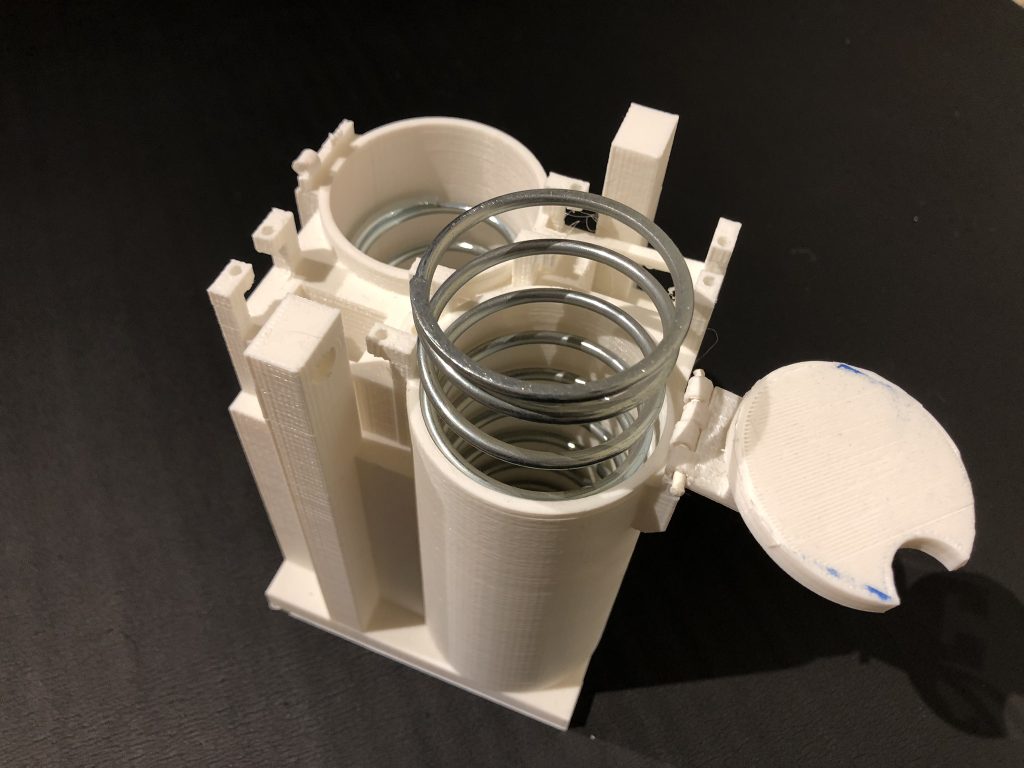
- Time in service: November 2018
- Tests performed: ~4
- Problems: short springs, week hinges, faulty release mechanism, hard to pack chute
- Status: parts reused
Gen 4-S
The Gen 4-S was similar in many ways to the Gen 3-S, it was simply a more refined version. The Gen 4-S solved most of the Gen 3-S’s issues such as week hinges and bad servo placement. Unfortunately, the Gen-4-S did not fix the issues with release mechanism power, which lead to this method of parachute deployment being retired entirely.
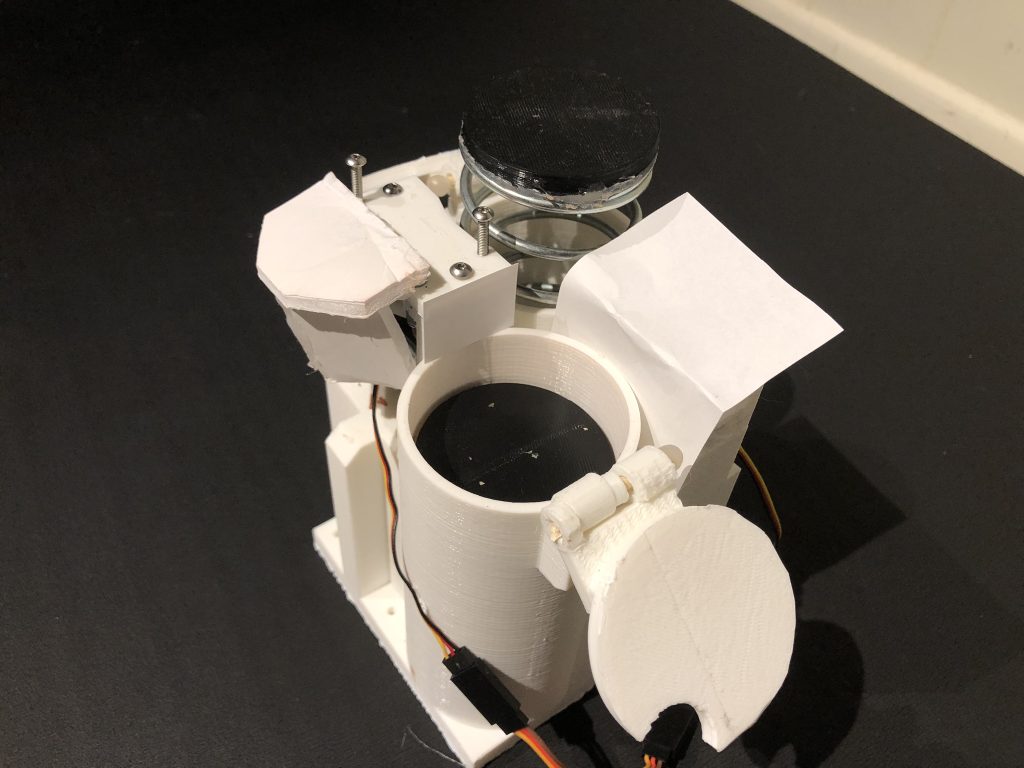
- Time in service: March-May 2019
- Tests performed: ~3
- Problems: faulty release mechanism, hard to pack chute
- Status: retired
